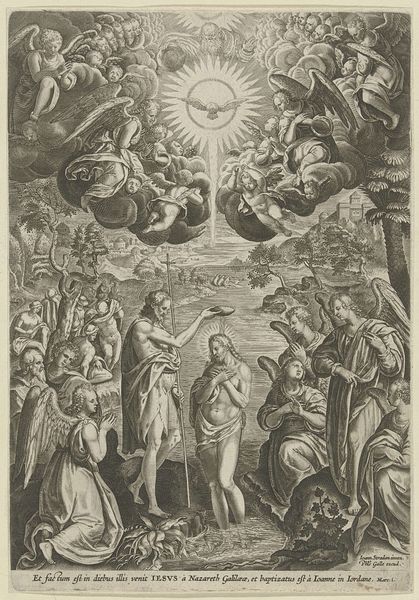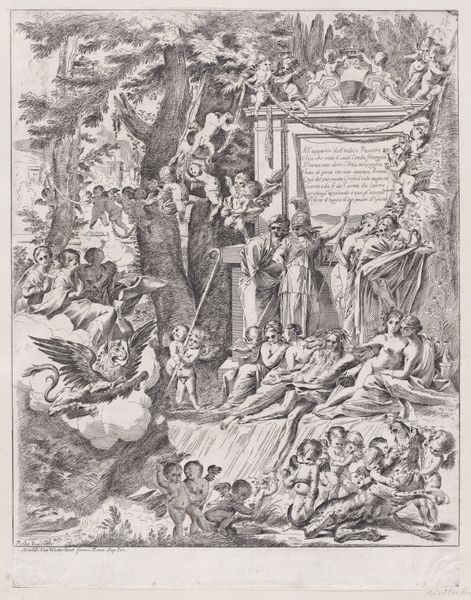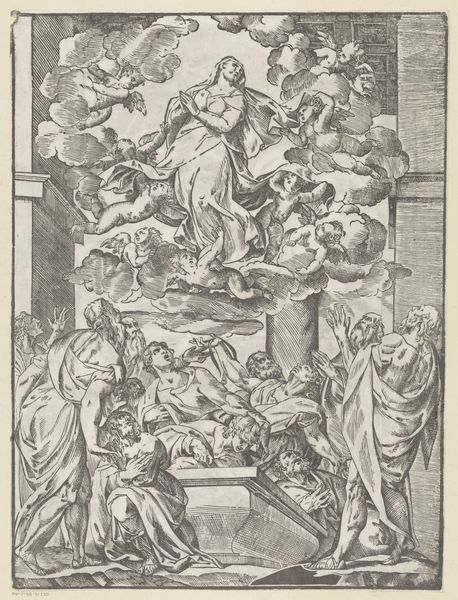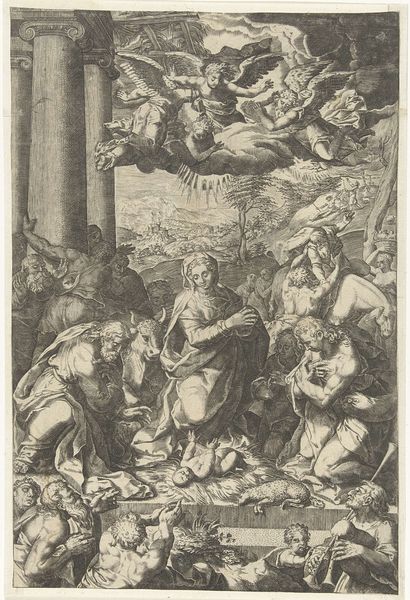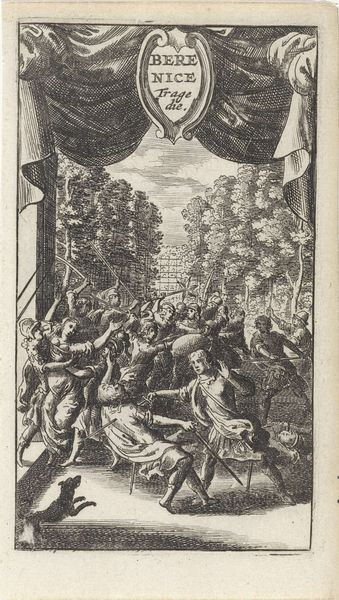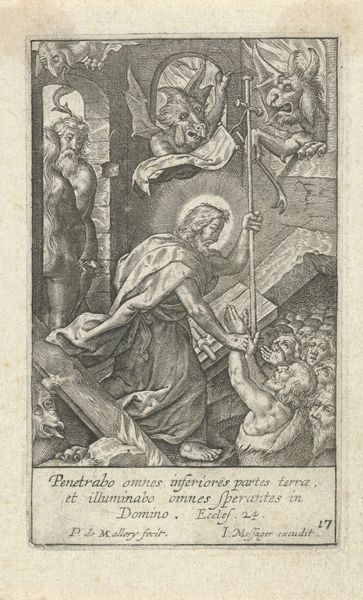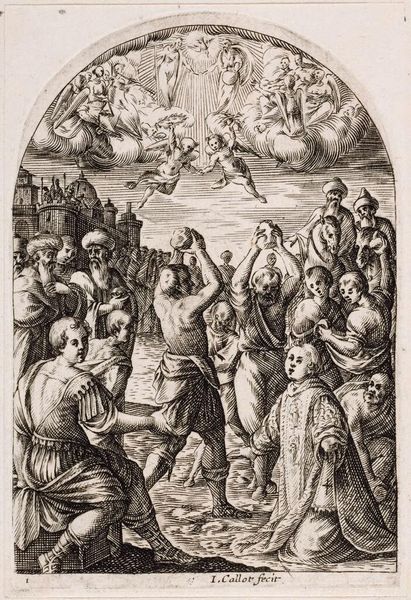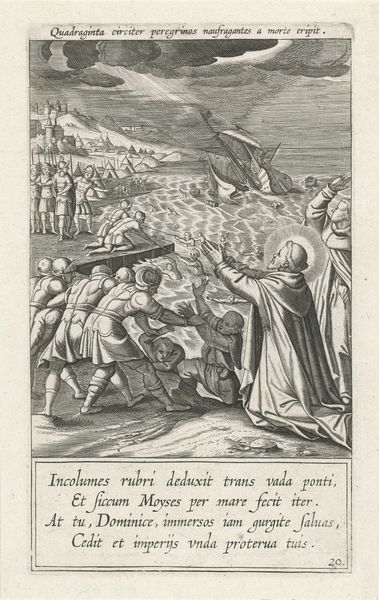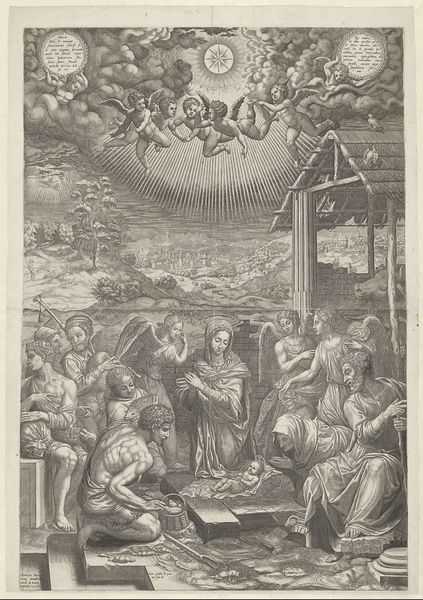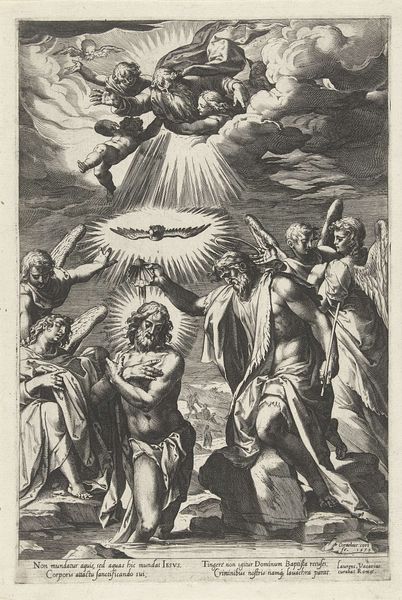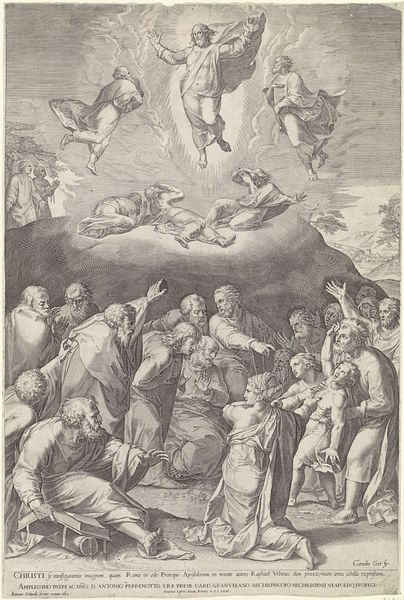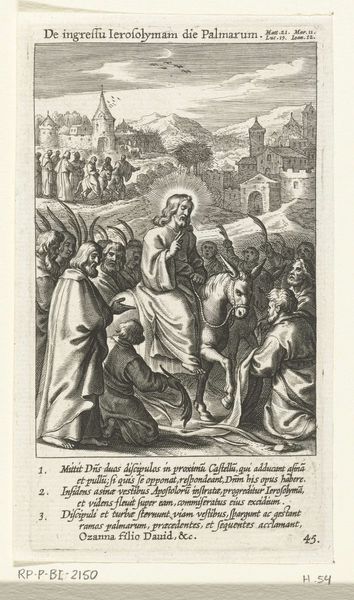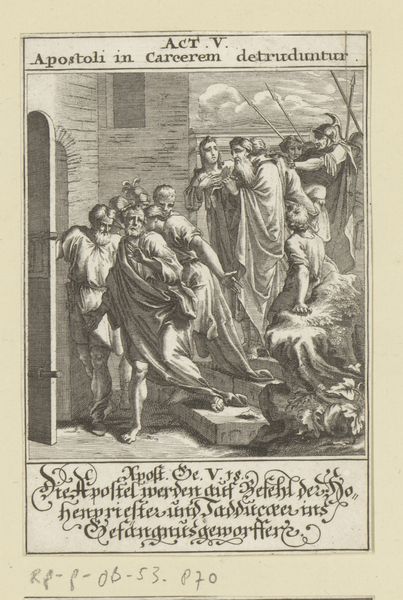
print, engraving
#
allegory
#
baroque
# print
#
history-painting
#
engraving
Dimensions: height 152 mm, width 89 mm
Copyright: Rijks Museum: Open Domain
Curator: This engraving, "Spiegel der gelukzaligheid," created around 1610 by Theodoor Galle, offers a complex allegorical vision. Editor: My immediate impression is one of fragmentation and hierarchy. The composition feels vertically stacked, with earthly struggles depicted below a radiant heavenly realm. It’s dramatic, definitely rooted in its Baroque period. Curator: Exactly. Galle presents a clear social hierarchy, reflecting contemporary religious and political anxieties. Notice how the figures are arranged, with the divine figures elevated above the mortals who either flee or kneel in supplication. Consider the placement of Daniel, guided by an angel. The composition guides us from worldly distress towards divine comfort, underscoring ideas of grace. Editor: What stands out to me, though, is the symbolism he employs. The radiant light, the angel's guidance, and the inscription from Psalm 36:9 all speak to a very particular symbolic language of salvation and divine grace. But let’s not forget it’s not all about grace, note the ones who flee, "Socy Danielis," those struck by the holy terror… I feel they reveal an inner turmoil of doubt when facing the divine light. Curator: True, there's an undeniable element of fear and judgement at play. Those fleeing emphasize the duality of divine presence, a rewarding of faithful service or punishment for sins, speaking to concerns of 17th-century Europe. Also note the location, that the original is held by the Rijksmuseum suggests how ideas around Dutch identity were bound up with religious doctrine. Editor: These sorts of engravings spread religious and moral ideas to those unable to access religious education in those times, making powerful visual motifs stick in the cultural memory. You get a real sense of a society grappling with its place in a divine order. Curator: Absolutely. The engraving acts as a visual catechism, translating abstract theological concepts into tangible imagery. What do you take away from the experience of viewing this piece today? Editor: I find that the human figures and symbolic landscape express doubt, belief, and a search for answers, resonating with feelings still pertinent now. Curator: Precisely. Galle's work invites us to interrogate the societal structures represented through visual narrative that continue to be debated in our own world today.
Comments
No comments
Be the first to comment and join the conversation on the ultimate creative platform.
